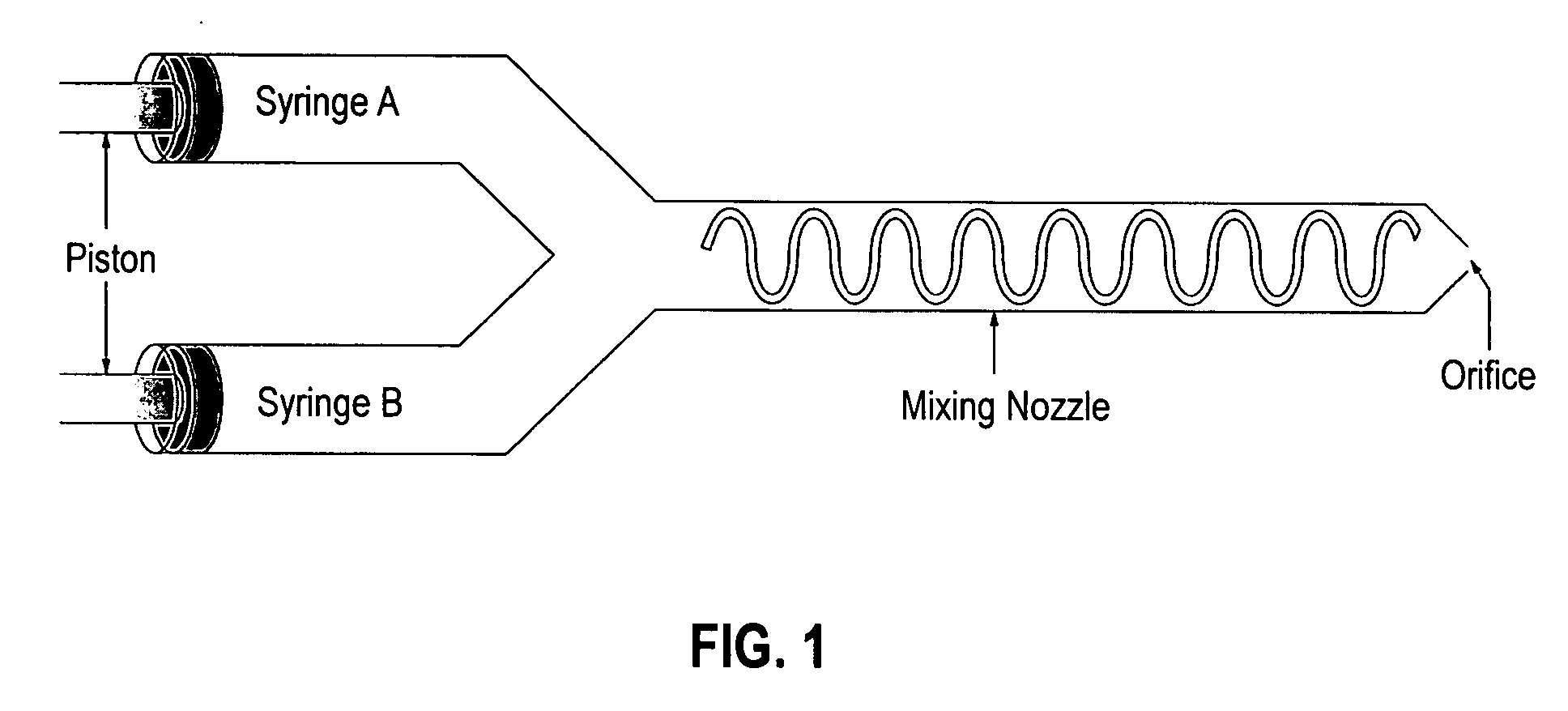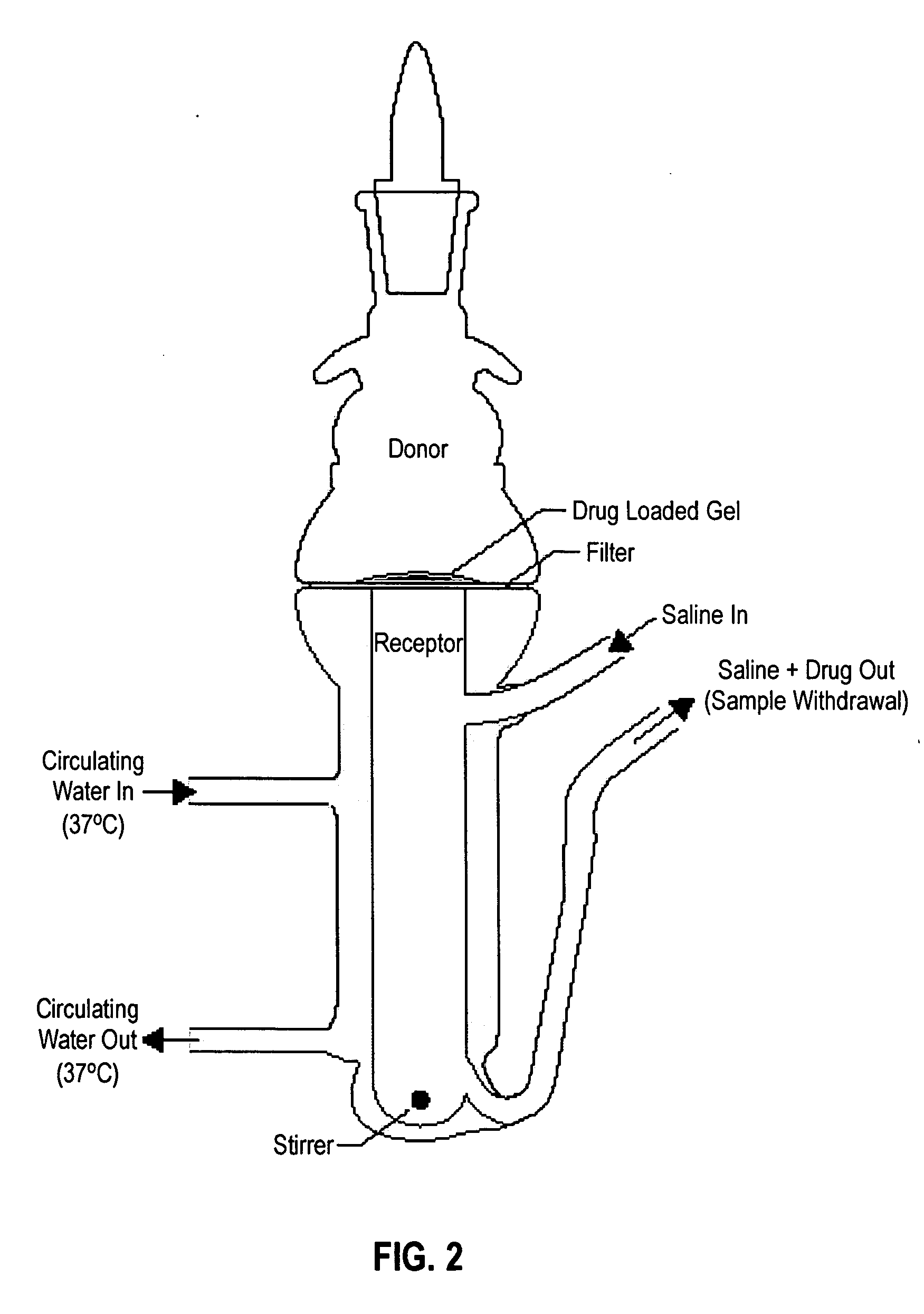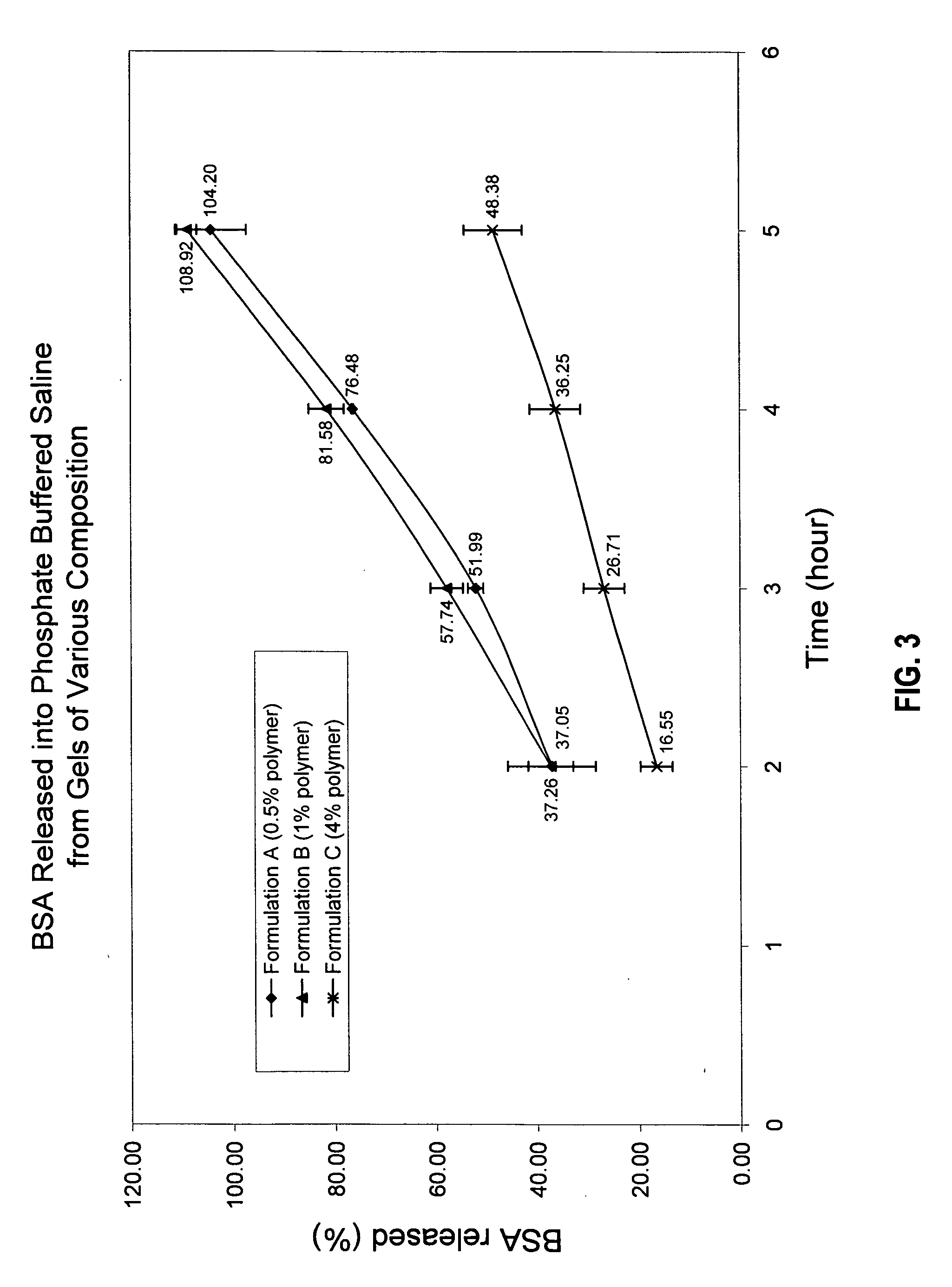Bioadhesive delivery system for transmucosal delivery of beneficial agents
a bioadhesive and beneficial agent technology, applied in the field of bioadhesive, multi-component formulations and methods of administration, can solve the problems of local reaction, adverse effects in some individuals, and high viscosity of formulations
- Summary
- Abstract
- Description
- Claims
- Application Information
AI Technical Summary
Benefits of technology
Problems solved by technology
Method used
Image
Examples
example 1
Preparation of pH-Responsive Polymer and Temperature-Responsive Polymer Mixture
[0107] Preparation Method A. A beaker with 100 ml of water was placed under a stirrer and mixing begun at 800-1200 rpm. The polymer (1 g of Carbopol or 2 g of polycarbophil) was carefully added to the water and stirring continued for 15 min to assure complete dispersion. The dispersion was then allowed to equilibrate for 30 min without stirring. The mixer speed was reduced to 300 rpm and, while stirring, the neutralizing reagent was added. Addition of neutralizer was continued until the desired pH was reached.
[0108] Preparation Method B. A 50-ml aliquot of solution was warmed to 40° C., and 2 g of Pluronic® F127 was added. After stirring the solution at 200 rpm for 10 min, 50 ml of cold water was added and the mixture stirred for another 20 min till a clear solution is obtained. The clear solution was divided into two equivalent parts (Portion 1 and Portion 2, 50 ml each). To Portion 1 (50 ml of 2% of P...
example 2
Effect of Molecular Weight of Pluronics®
[0111] Method: The pH of an aqueous solution of Pluronics® is measured. Subsequently, Polycarbophil is added to the solution, and the pH is measured again. Solutions are neutralized by adding sufficient amounts of aqueous NaOH to reach a pH of about 5. The viscosity of the resulting mixture is measured at 37° C., at different torques (Brookfield viscometer). Data is presented in Table 2.
TABLE 2Pluronics ® Grade vs. Viscosity of the Polycarbophil-Pluronic ® BlendViscosity [cp]1EntryFormulation0.3 rpm0.6 rpm1.5 rpm3 rpmpH before2pH after3Final pH412 wt % PC5 (control)245,000128,00055,00030,0003.53.595.1622 wt % PC, 2 wt %183,00092,00040,00022,8006.793.5855Pluronic ® F 12732 wt % PC, 2 wt %193,000107,00044,00025,0004.93.585.09Pluronic ® F 10842 wt % PC 2 wt %246,000108,00050,00026,0004.843.435.5Pluronic ® L 4452 wt % PC 2 wt %237,000125,00054,55630,2006.223.515.15Pluronic ® F 68
1Viscosity measurements performed at 37° C.
2pH of the Pluronic ® s...
example 3
Effect of Temperature on the Gel Viscosity of Polycarbophil
[0112] Procedure: See Example 1 for formulation preparation method. Data for a formulation consisting of 2 wt % polycarbophil is shown in Table 3. The viscosity was measured at ambient and the physiological temperature. In the latter case, the gel was maintained in the viscometer jacket at 37° C. for 30 minutes before measuring viscosity at the specified torque.
TABLE 3Gel Viscosity: Temperature DependenceViscosit [cp]EntryTemperature0.3 rpm0.6 rpm1.5 rpm3 rpm1room temperature152,00084,10038,50022,000237° C.245,000128,00055,00030,000
PUM
| Property | Measurement | Unit |
|---|---|---|
| Temperature | aaaaa | aaaaa |
| Fraction | aaaaa | aaaaa |
| Fraction | aaaaa | aaaaa |
Abstract
Description
Claims
Application Information
 Login to View More
Login to View More - R&D
- Intellectual Property
- Life Sciences
- Materials
- Tech Scout
- Unparalleled Data Quality
- Higher Quality Content
- 60% Fewer Hallucinations
Browse by: Latest US Patents, China's latest patents, Technical Efficacy Thesaurus, Application Domain, Technology Topic, Popular Technical Reports.
© 2025 PatSnap. All rights reserved.Legal|Privacy policy|Modern Slavery Act Transparency Statement|Sitemap|About US| Contact US: help@patsnap.com



